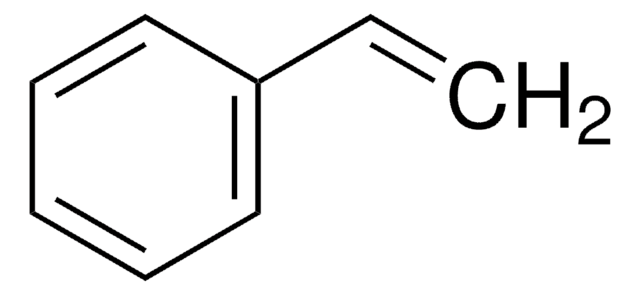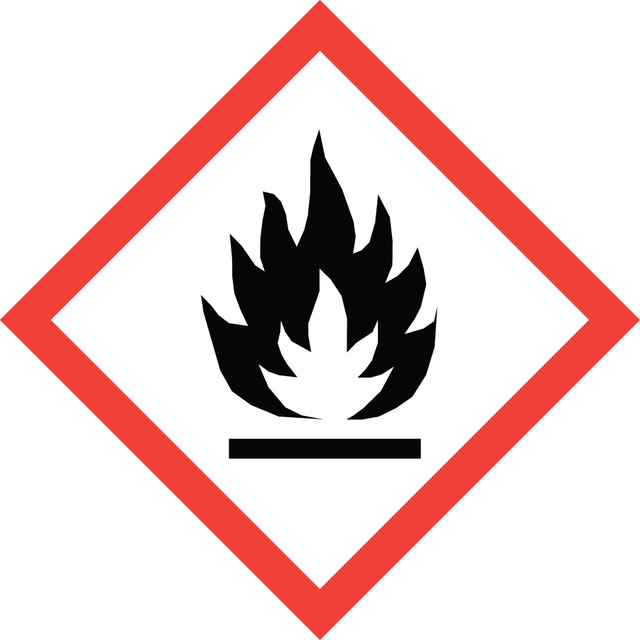234923
Butyl acrylate
≥99%, contains 10-60 ppm monomethyl ether hydroquinone as inhibitor
동의어(들):
n-Butyl acrylate
로그인조직 및 계약 가격 보기
모든 사진(3)
About This Item
Linear Formula:
CH2=CHCOO(CH2)3CH3
CAS Number:
Molecular Weight:
128.17
Beilstein:
1749970
EC Number:
MDL number:
UNSPSC 코드:
12162002
PubChem Substance ID:
NACRES:
NA.23
추천 제품
vapor density
>1 (vs air)
Quality Level
vapor pressure
3.3 mmHg ( 20 °C)
분석
≥99%
양식
liquid
autoignition temp.
559 °F
포함
10-60 ppm monomethyl ether hydroquinone as inhibitor
expl. lim.
9.9 %
refractive index
n20/D 1.418 (lit.)
bp
145 °C (lit.)
density
0.894 g/mL at 25 °C (lit.)
SMILES string
CCCCOC(=O)C=C
InChI
1S/C7H12O2/c1-3-5-6-9-7(8)4-2/h4H,2-3,5-6H2,1H3
InChI key
CQEYYJKEWSMYFG-UHFFFAOYSA-N
유사한 제품을 찾으십니까? 방문 제품 비교 안내
일반 설명
Butyl acrylate is commonly used as a monomer, or building block, in the production of various types of polymers, including acrylate and methacrylate polymers. It is also used in combination with other monomers to achieve specific properties in the resulting polymers. These polymers can be used in a wide range of applications such as paints and coatings, textiles, adhesives, lithium-ion batteries, actuators, and biomedical devices and packaging materials. In the polymerization of butyl acrylate, the most common inhibitor used is monomethyl ether hydroquinone (MEHQ). It is typically added in small quantities (10-60 ppm) to hinder undesirable side reactions during the polymerization, ensuring controlled and high-quality polymer formation. It can also effectively increase the storage stability of butyl acrylate by reacting with free radicals that may initiate polymerization.
Butyl acrylate undergoes radical copolymerization with benzoxazine containing a vinyl group to afford copolymers. Heck coupling reactions of aryl bromides with n-butyl acrylate mediated by phosphine-imidazolium salt have been reported. Copolymerization of styrene and n-butyl acrylate by ATRP catalyzed by CuBr/4,4′-di(5-nonyl)-2,2′-bipyridine has been described.
Butyl acrylate undergoes radical copolymerization with benzoxazine containing a vinyl group to afford copolymers. Heck coupling reactions of aryl bromides with n-butyl acrylate mediated by phosphine-imidazolium salt have been reported. Copolymerization of styrene and n-butyl acrylate by ATRP catalyzed by CuBr/4,4′-di(5-nonyl)-2,2′-bipyridine has been described.
애플리케이션
Butyl acrylate (BA) can be used as:
- An electrolyte additive in lithium-ion batteries to improve their low-temperature performance. The addition of BA to the electrolyte led to a significant improvement in the low-temperature performance of the battery, including enhanced ionic conductivity and improved rate capability.
- A monomer to synthesize a shape memory polymer network that contains magnetic nanoparticles for various applications, including actuators and biomedical devices.
- A monomer for the preparation of a polymeric semiconductor with intrinsically stretchable properties. This polymer material is used as a component in field-effect transistor applications.
- Poly(butyl acrylate) particles.
- Poly(butyl acrylate-b-acrylic acid) block copolymer.
- Amphiphilic charged diblock copolymers poly(butyl acrylate)-b-poly(acrylic acid).
- Poly(n-butyl acrylate), via atom transfer radical polymerization (ATRP) of n-butyl acrylate in the presence of CuIBr/4,4′-di(5-nonyl)-2,2′-bipyridine (catalyst).
신호어
Warning
유해 및 위험 성명서
Hazard Classifications
Acute Tox. 4 Dermal - Acute Tox. 4 Inhalation - Aquatic Chronic 3 - Eye Irrit. 2 - Flam. Liq. 3 - Skin Irrit. 2 - Skin Sens. 1 - STOT SE 3
표적 기관
Respiratory system
Storage Class Code
3 - Flammable liquids
WGK
WGK 1
Flash Point (°F)
98.6 °F - closed cup
Flash Point (°C)
37 °C - closed cup
개인 보호 장비
Eyeshields, Faceshields, Gloves, type ABEK (EN14387) respirator filter
이미 열람한 고객
자사의 과학자팀은 생명 과학, 재료 과학, 화학 합성, 크로마토그래피, 분석 및 기타 많은 영역을 포함한 모든 과학 분야에 경험이 있습니다..
고객지원팀으로 연락바랍니다.

















